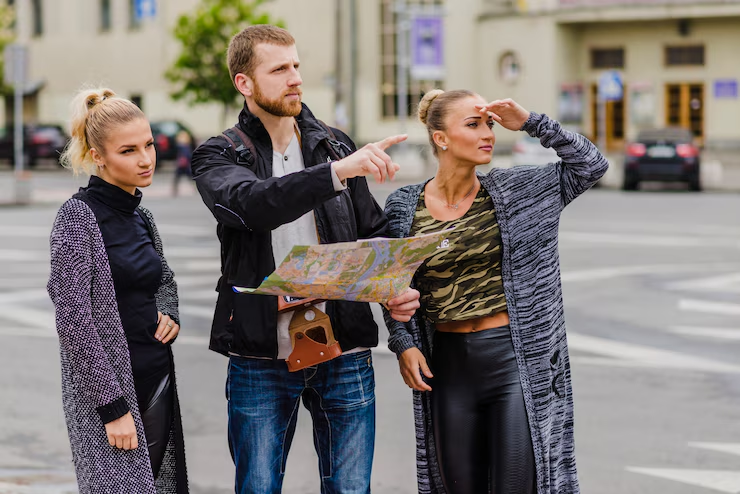Preparing for Urban Group Travel
Traveling with a group in a bustling city is an exciting prospect, but the success of any urban group adventure starts during the planning phase. The earlier you start, the more flexibility and options you’ll have, especially with popular cities often inundated by visitors and events. Essential planning steps include compiling a list of attendees, collecting emergency contact information, confirming access needs, and reviewing the local calendar for activities that might disrupt standard travel routes. According to information from the AAA’s group travel trends, groups that prioritize planning face fewer unexpected challenges and report higher satisfaction with the overall experience.
One crucial task is choosing transportation that adapts to changing urban conditions. Because cities like Los Angeles are known for unpredictable traffic and parking limitations, organizers frequently turn to private LA bus rentals that offer greater control in scheduling, routing, and flexibility than public options. Coordinators like these rentals for their ability to tailor pickup locations and accommodate group preferences, which ultimately streamlines the process. Prioritizing efficient transportation from the outset transforms group outings from a logistical headache into a delightful day, giving everyone more time for the activities and experiences that matter.
Navigating the Unique Challenges of City Transportation
Cities are not only vibrant; they’re also complex environments with their own unique set of travel challenges. Navigating busy intersections, anticipating frequent traffic jams, and staying aware of special regulations for buses or oversized vehicles are all things groups have to consider. Many metropolitan areas have dedicated bus lanes or specific hours for group loading and unloading, and failure to follow these rules can lead to long delays or hefty fines. Insights from the U.S. Department of Transportation indicate that cities prioritizing public transit and group travel are seeing up to 20% improved group transit times, directly benefiting those who take the time to research local regulations.
Building a flexible schedule is pivotal. When city streets fill unexpectedly due to protests, marathons, or film shoots—a common occurrence in major urban centers—leaving extra room in the itinerary relieves pressure on organizers and participants. Travel-ready groups check city websites or subscribe to local alerts to prepare for these unusual events in advance. A little prevention means your group won’t just reach the destination, but will do so with energy left to enjoy the activity that brought them together in the first place.
The Role of Shared Transport Options
Shared transportation has transformed the way groups move in dense urban environments. Instead of half a dozen cars each fighting for downtown parking, a single motorcoach can carry everyone comfortably while simplifying logistics from start to finish. Beyond efficiency, shared rides boost the travel experience by allowing passengers to interact, unwind, or collaborate during the trip, whether preparing for a conference session or simply catching up with colleagues. This approach also sidesteps the stress of figuring out who must navigate city streets and who might get delayed by congestion or parking woes.
Amenities such as Wi-Fi, charging outlets, reclining seats, and climate control cater to the modern traveler. For groups making multiple stops daily, a chartered vehicle can follow a route tailored to the itinerary, removing the guesswork from transitioning between destinations. Coordinators encouraging centralized pickup and drop-off points see smoother transitions and keep everyone together, preserving time and group unity. Relying on shared transport strengthens the group dynamic and significantly reduces pollution—a win for participants and the city.
Embracing Technology for Coordination
The evolution of travel technology has significantly eased the burden of group organization, especially in cities where the pace of life is rapid and plans can change quickly. Group messaging apps simplify sending updates, clarifying instructions, and keeping every participant in the loop, no matter the group’s size or where everyone is coming from. Live tracking software has transformed how groups wait for arrivals; with GPS location sharing, users can see exactly when the bus is nearing the pickup point, sidestepping the need for repeated check-ins and the anxieties that come with uncertainty.
Tech tools now let organizers share itineraries, tickets, seating plans, and local emergency details in one shared folder. Before the wheels start rolling, everything from dietary restrictions to weather alerts can be addressed. With so much of the planning and real-time communication streamlined by technology, groups have more freedom to focus on the purpose of their trip, whether that’s business, education, or celebration.
Aligning with Sustainable Practices
The push for sustainability has moved to the forefront of urban travel planning. Eco-conscious groups want to know that their travel choices minimize environmental impact. Private and shared buses consistently outperform individual vehicles in terms of fuel efficiency and reduced emissions. The American Bus Association notes that motorcoaches remove up to 55 cars from city roads for every full bus, cutting traffic and lowering greenhouse gas output.
Groups looking to make their journey “greener” can request newer, ultra-low-emission vehicles or choose routes that reduce mileage and idling. Carbon offset programs—now offered by many transport providers—add another easy way to balance out the environmental cost of travel. All these measures help the planet and appeal to participants who prioritize responsible, forward-thinking choices in their professional and personal lives.
Prioritizing Comfort and Accessibility
Comfort and accessibility are crucial elements of a positive travel experience, especially when a trip spans multiple hours and involves people of differing ages and physical abilities. Charter transportation companies now equip vehicles with various accessibility features, like wheelchair lifts, secure tie-downs, priority seating, and onboard restrooms. Attentive coordinators check in early with attendees to see if additional assistance is needed, ensuring that the bus is equipped correctly and anyone with mobility or health needs can participate fully.
Modern coaches frequently offer climate control, ample luggage space, adjustable lighting, and entertainment options. While easily overlooked, these details can transform a taxing day navigating city streets into a far more relaxing and inclusive adventure. Participants who feel accommodated and respected are more engaged, leading to a more harmonious and successful event.
Communication Tips for Seamless Experiences
Group communication is at the heart of every successful outing. Proactive leaders provide digital and printed itineraries, safety protocols, and contact details well in advance, minimizing confusion and anxiety, especially for participants who may not travel frequently. It’s wise to designate dedicated points of contact within the group, so questions or emergencies are always directed to someone ready and able to help.
- Share travel details and contact information ahead of the trip.
- Remind everyone to keep their phones charged and to check notifications routinely.
- Host a brief pre-departure meeting to reinforce the plan and answer last-minute questions.
Consistent, clear communication reduces errors and delays and ensures everyone feels included, especially in high-stress or unfamiliar environments.
Case Study: Real-Life Urban Group Travel Success
Take the example of a youth orchestra traveling to a multi-day music festival across a bustling city. Their organizers started planning months in advance: booking shared charter buses, mapping out routes that bypassed major traffic bottlenecks, and sharing a live GPS bus tracker with all parents. Daily schedules were sent via group text each morning, and team leads ensured every musician was accounted for before departure. The buses’ amenities let students rest and recharge between performances, while shared travel fostered lasting friendships. Through careful preparation, smart tech use, and stress-free group transportation, the orchestra arrived at every venue early, energy and spirits high.
Final Thoughts on Group City Travel
Reducing group travel stress in any busy city comes from thoughtful planning, strategic transportation choices, innovative tech tools, and exceptional communication. For group leaders, these factors aren’t just theoretical—they’re proven, practical approaches validated by research, real-world case studies, and national transportation data. By embracing these innovative methods, groups ensure that every journey—however complex the cityscape—remains safe, enjoyable, and memorable for all involved.

